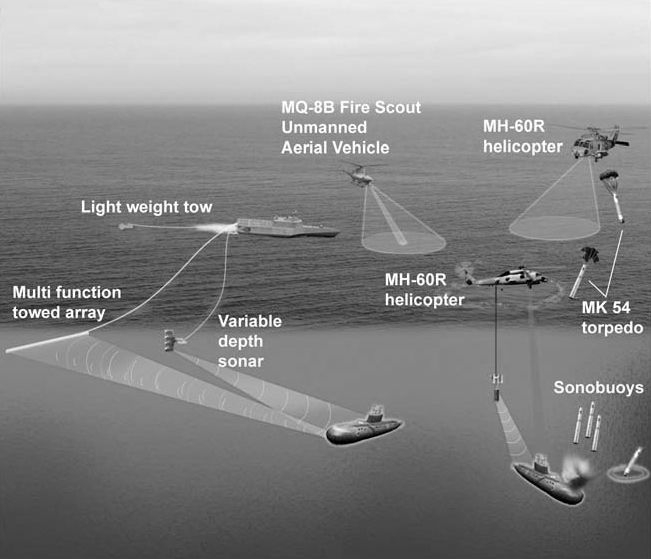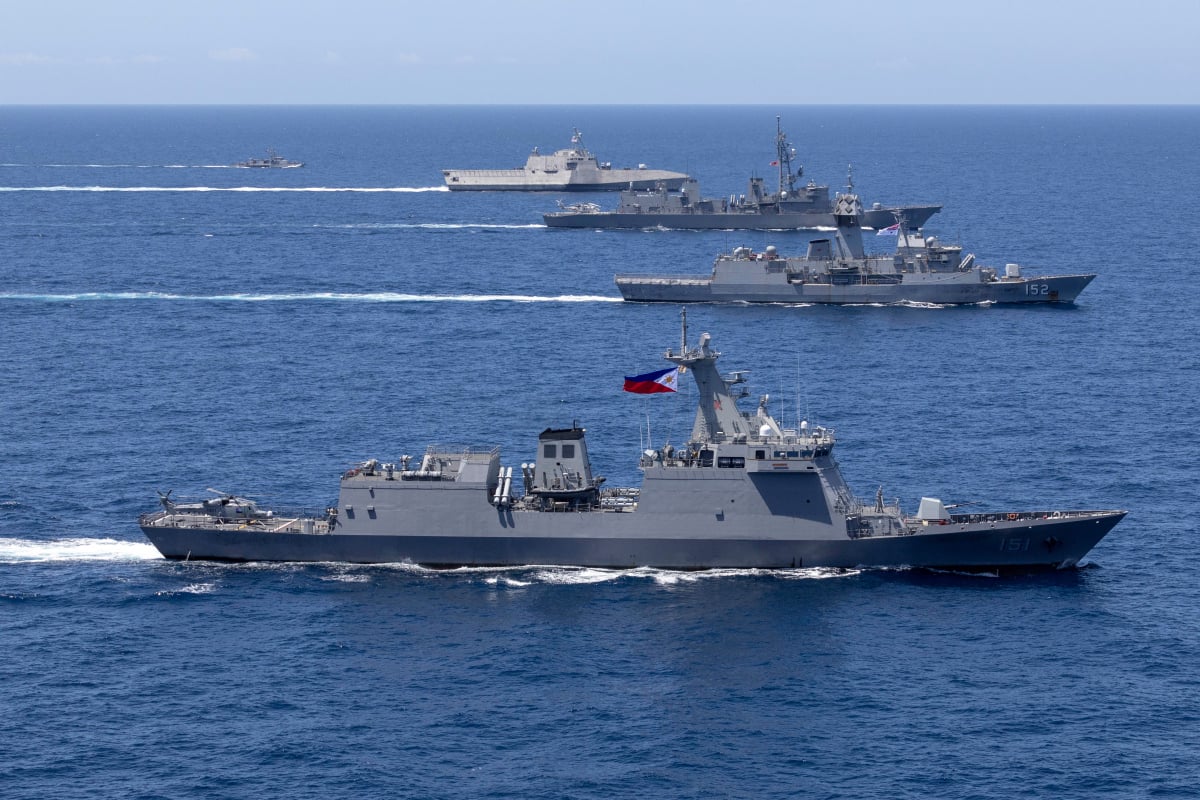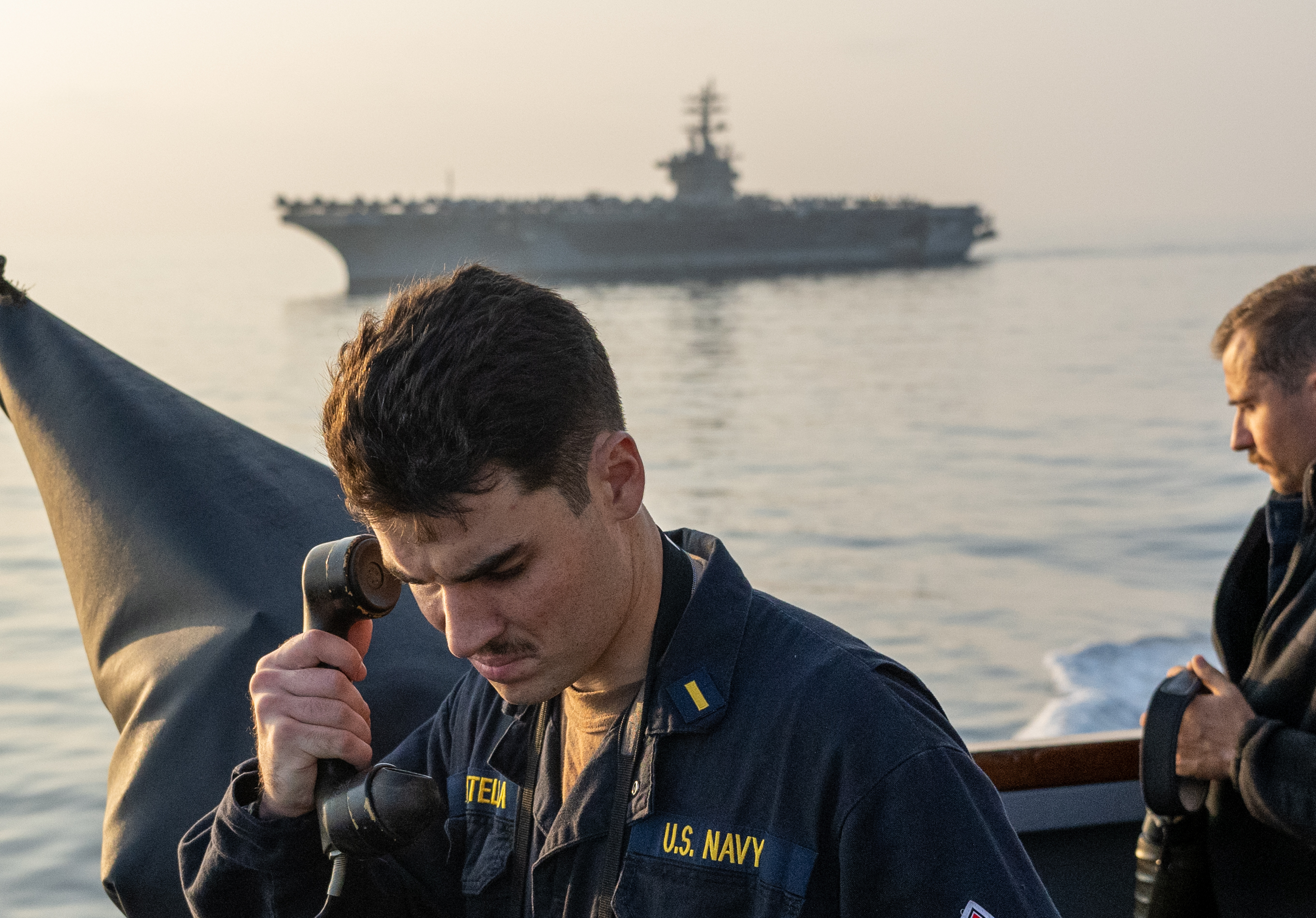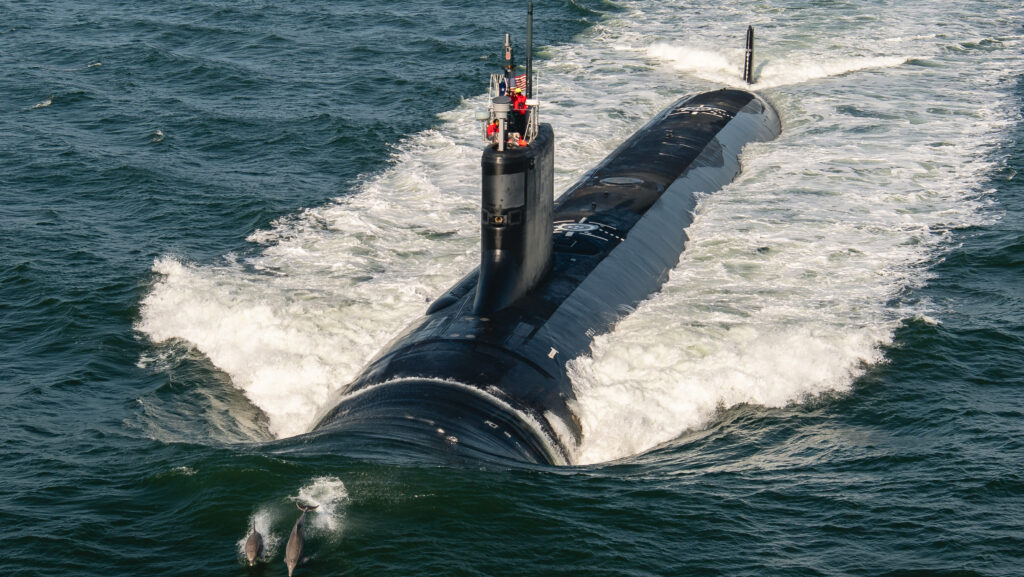
The Navy’s quest to cut weight from the planned Littoral Combat Ship anti-submarine warfare (ASW) mission package is neither the result of weight gain in the planned systems nor a new requirement of the program, Naval Sea Systems Command told USNI News.
The need to reduce at least 15 percent of the weight of the systems is born instead of the service’s decision to use proven systems and always has long held plans to mount a weight reduction.
The statement follows the July 20 award of about $600,000 in contracts — split evenly between Advanced Acoustic Concepts, L-3 Communications and Raytheon — to trim 15 to 25 percent of the fat from the mission package.
NAVSEA said each companies proposal met the 15 percent weight reduction goal. USNI News first reported on the weight reduction effort last week.
Arguably the most technologically mature of the three planned LCS mission packages, the planned ASW package for the ships will center around the Thales UK Sonar 2087 variable depth sonar — in service with the U.K. Royal Navy for the last several years — and the Lockheed Martin TB-37/U Multi-Function Towed Array (MFTA) currently in use by the Navy.
“The Navy has decided to field the ASW MP in the most cost effective and efficient way by utilizing ‘off-the-shelf’ ASW sensor technologies, and focusing on integrating these into LCS,” read the statement from NAVSEA.
In particular, the Thales sonar promises to greatly expand the capability of the Navy to detect submarines beneath the sea’s thermal layers — an extreme shift in ocean temperature through which a hull mounted sonar has difficulty operating.
However, the off-the-shelf choice required the weight loss.
“The Navy desires to maintain the performance but reduce the weight as part of the repackaging in order to meet LCS interface standards,” the statement said.
“The awarded contracts are intended to do this, and this has been the Navy’s plan throughout the development effort.”
The Navy’s plan for the ASW package shifted dramatically in 2011 when it elected not to use Lockheed Martin’s Remote Multi-Mission Vehicle (RMMV) — an autonomous vehicle still in use in the mine-countermeasures (MCM) package that would have fielded sonar arrays remotely — in favor of a so-called “in stride” capability for the mission package.
The success of the Sonar 2087 with the Royal Navy’s Duke-class Type 23 frigates was in part responsible for the shift in thinking, USNI News understands.
Moving forward, the Navy will evaluate the submissions from the trio and then decide if it will exercise the existing contract options to implement the slimming on the ASW mission package.
As of last year, the service had planned to buy 16 of the ASW mission packages for LCS.





